
Issue Contents

Screen Shots from Recovering from Disruption
We pulled out a number of stills from the film and inserted them below. Click on any image to open a bigger version in a new tab. Ctrl+w will close the new tab and return you to Carfree Times.
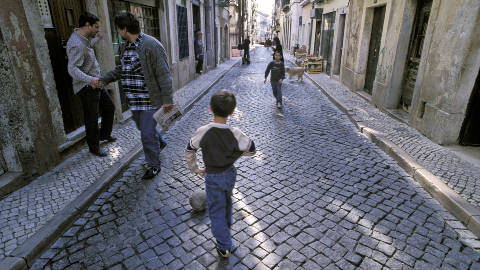
Lisbon

2003 J.Crawford
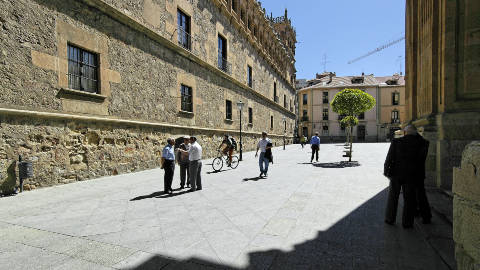
Salamanca

2005 J.Crawford
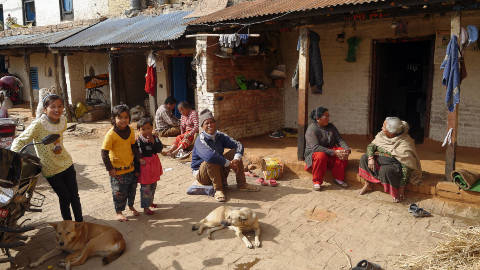
Jhaukhel, Nepal

2015 Bansidhar Sainju
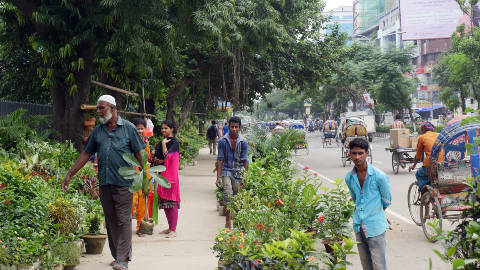
Dhaka

2015 WBB
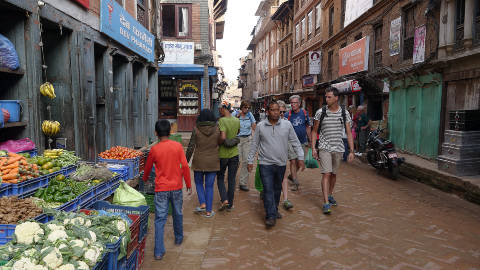
Bhaktapur

2014 Bansidhar Sainju
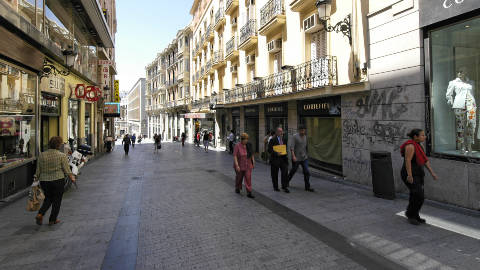
Madrid

2005 J.Crawford
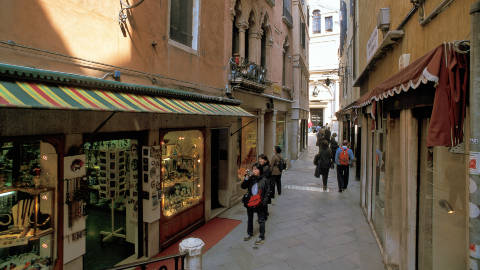
Venice

2001 J.Crawford
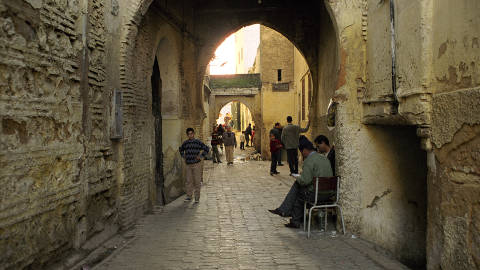
Fes-al-Bali, Morocco

2002 J.Crawford
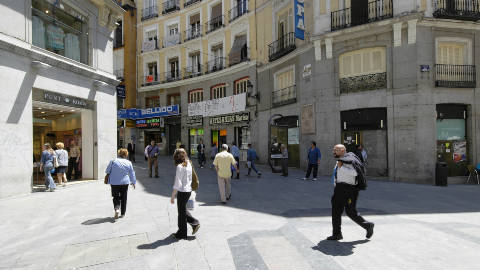
Madrid

2005 J.Crawford
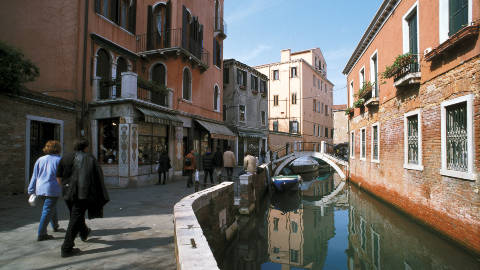
Venice

2001 J.Crawford
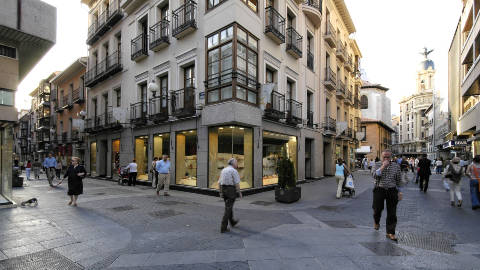
Valladolid, Spain

2005 J.Crawford
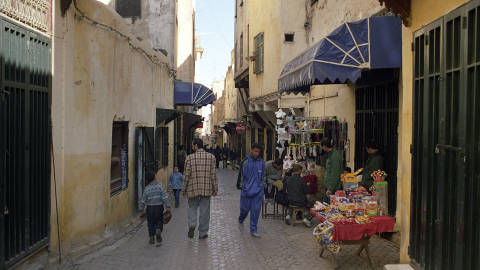
Fes-al-Bali, Morocco

2002 J.Crawford
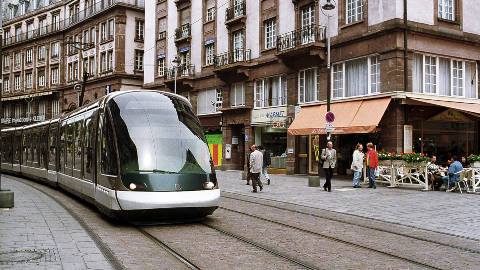
Strasbourg

1997 J.Crawford
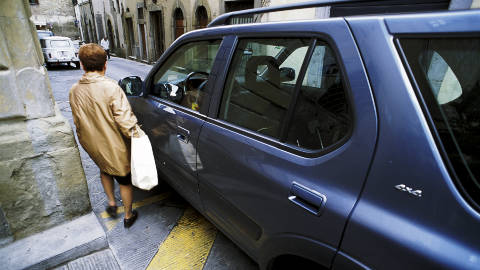
Arezzo, Italy

2002 J.Crawford
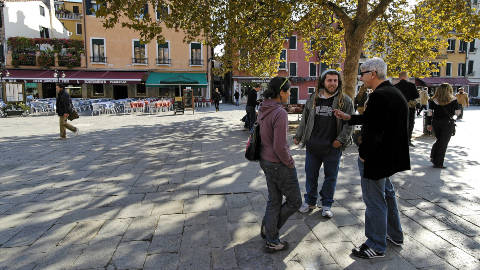
Venice

2005 J.Crawford
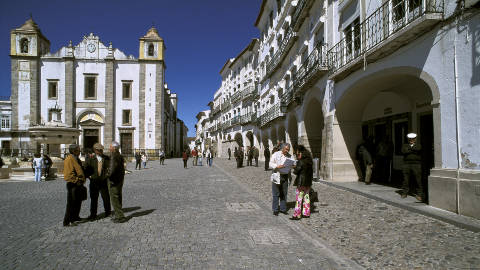
Evora, Portugal

2004 J.Crawford
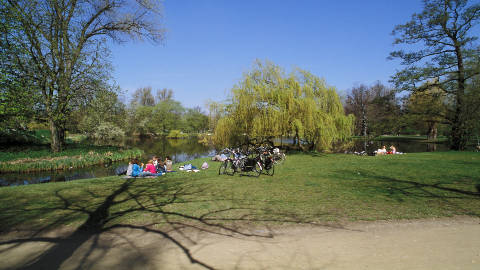
Amsterdam

2004 J.Crawford
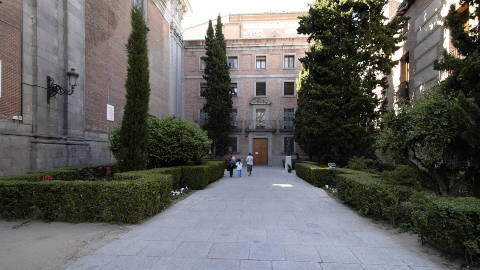
Madrid

2005 J.Crawford
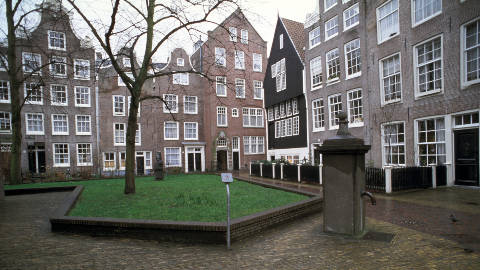
Amsterdam

1999 J.Crawford
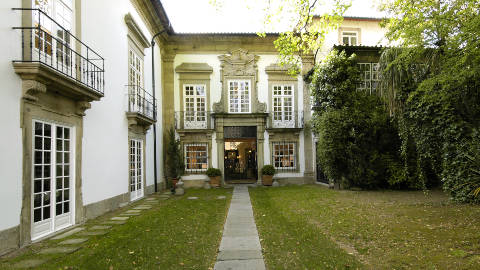
Braga, Portugal

2005 J.Crawford
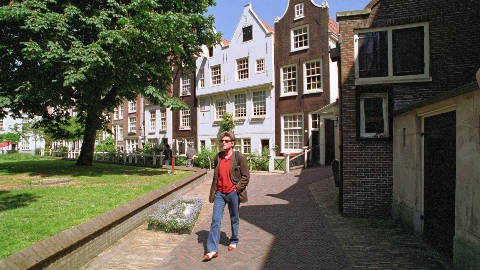
Amsterdam

1997 J.Crawford
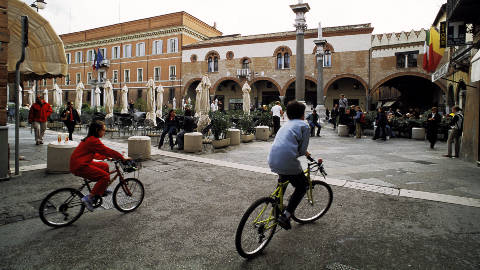
Ravenna, Italy

2002 J.Crawford
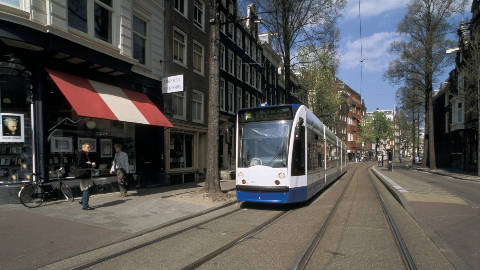
Amsterdam

2004 J.Crawford
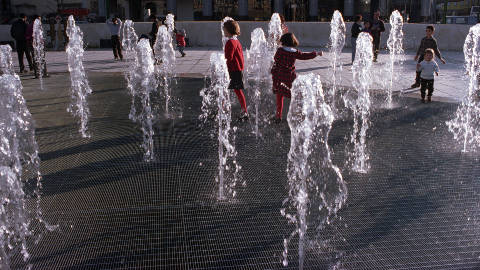
Lisbon

1998 J.Crawford
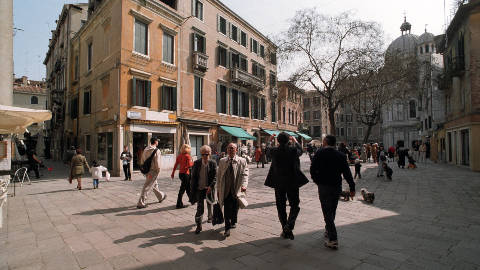
Venice

2001 J.Crawford
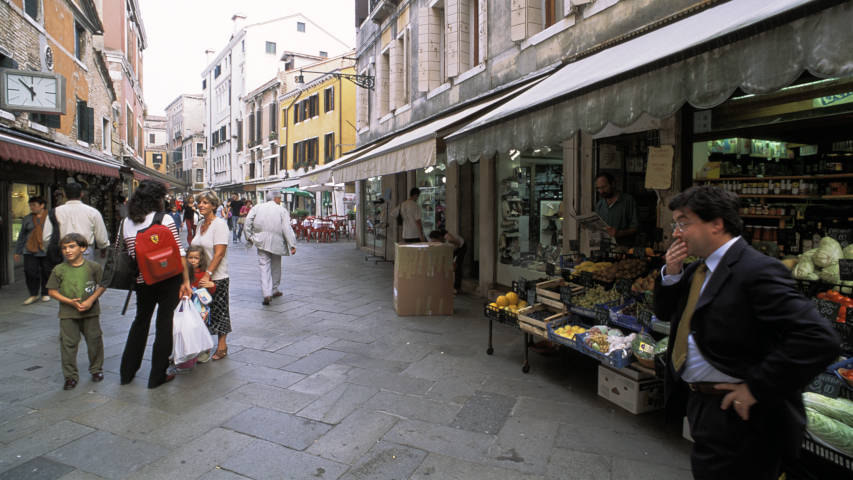
Venice

2002 J.Crawford
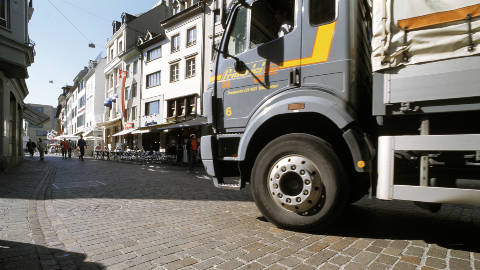
Basel, Switzerland

2002 J.Crawford
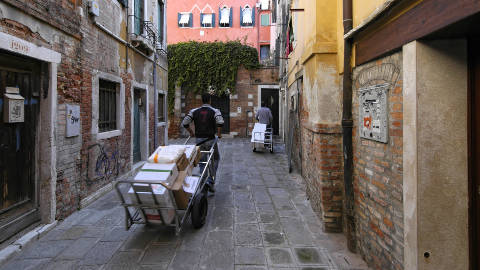
Venice

2005 J.Crawford
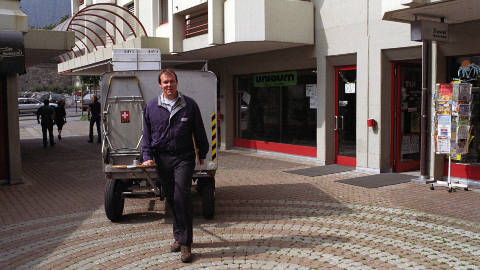
Brig, Switzerland

1998 J.Crawford
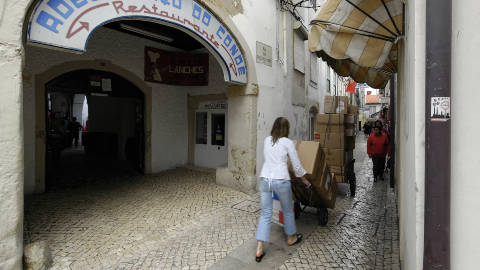
Coimbra, Portugal

2005 J.Crawford
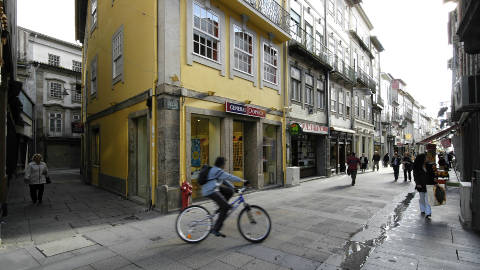
Braga, Portugal

2005 J.Crawford
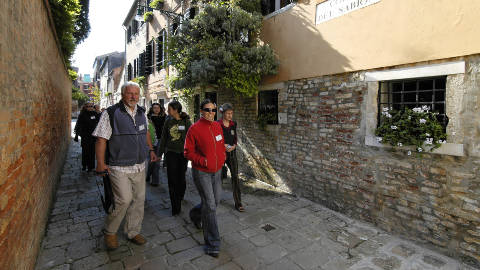
Venice

2005 J.Crawford
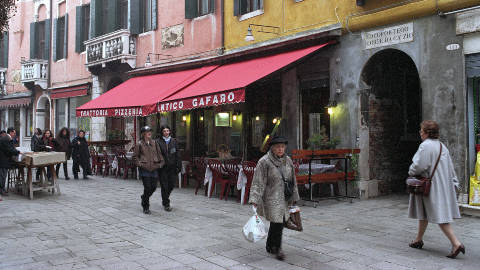
Venice

1997 J.Crawford
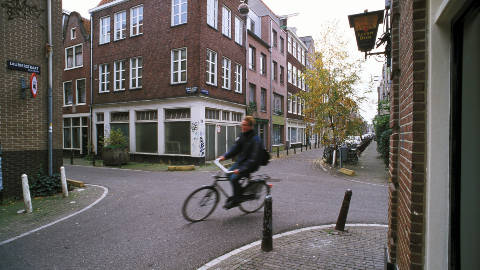
Amsterdam

2003 J.Crawford
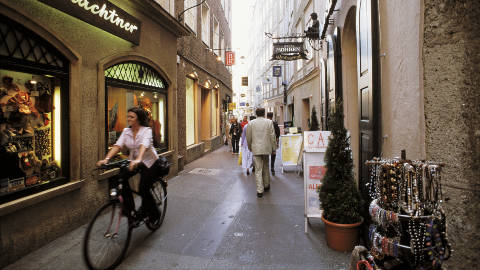
Salzburg, Austria

2002 J.Crawford
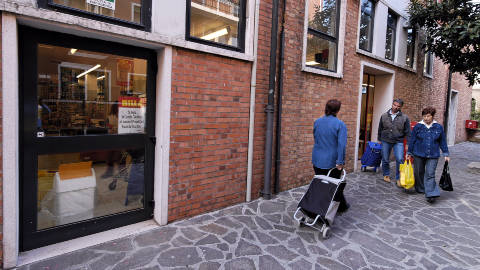
Venice

2005 J.Crawford
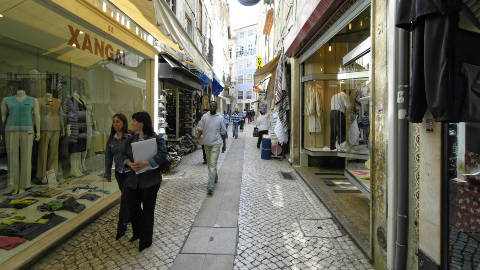
Coimbra, Portugal

2005 J.Crawford
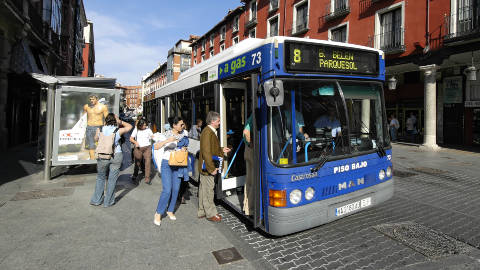
Valladolid, Spain

2005 J.Crawford
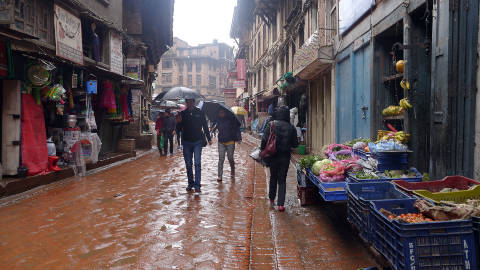
Bhaktapur

2015 Ram Kumar KC
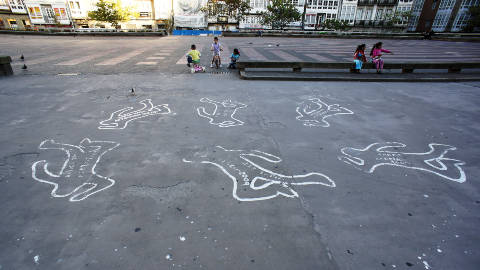
Ferrol, Spain

2011 J.Crawford
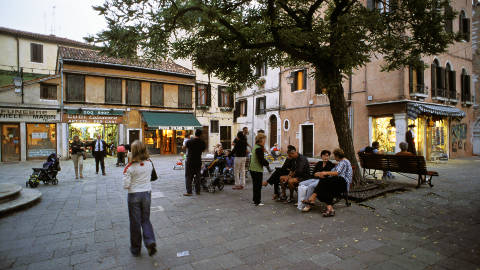
Venice

2002 J.Crawford
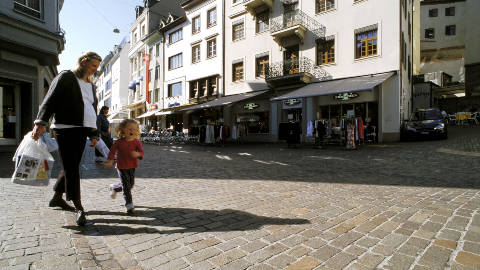
Basel

2002 J.Crawford
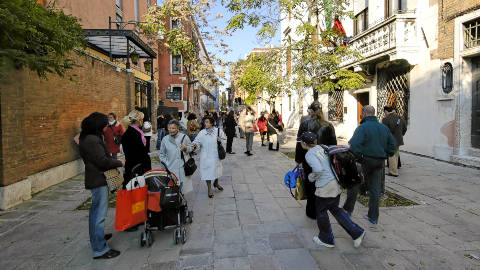
Venice

2005 J.Crawford
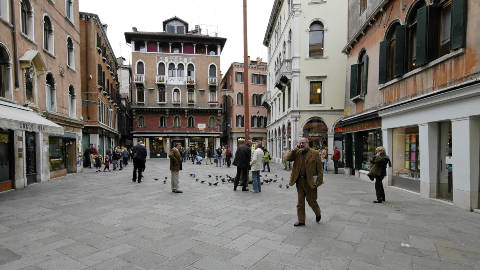
Venice

2005 J.Crawford
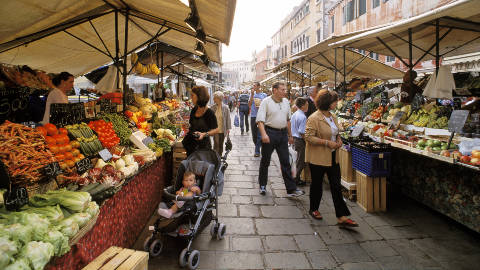
Venice

2002 J.Crawford
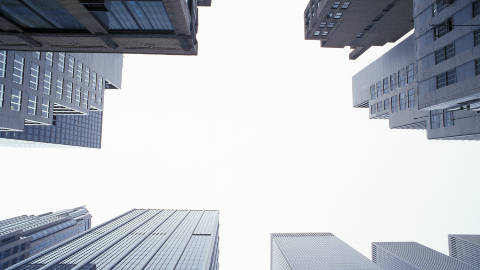
New York City

1999 J.Crawford
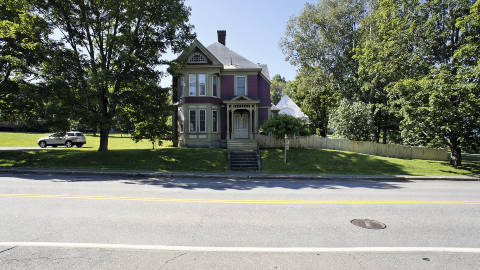
Dover-Foxcroft, Maine

2012 J.Crawford
|

|

Announcements
Carfree.com, in cooperation with HealthBridge Canada and Work for a Better Bangladesh, premiered the 53-minute film on 13 August 2015 in Dhaka and Kathmandu.
The film considers the many challenges to sustainability that we face and offers a full set of solutions. It considers most of the challenges in the light of the carfree city, which helps to solve most of the challenges we face. We are now striving to use the film to influence the Paris climate talks in November/December.
The film was released under a Creative Commons non-commercial, attribution-only license, and groups around the world are invited to make a localized version in their own language. We can furnish all the materials that went into making the initial version, which was released only in English. We hope to release Nepali and Bengali versions in the near future. This is by far the most ambitious film we have undertaken.
The film can be viewed on line or downloaded for free. It may be shown to anyone as long as no admission fee is charged. The film is available at:
You can also use the Carfree channel at Vimeo, which gives access to another 30 videos on carfree cities and related issues.
The film has its own web site.
We anticipate releasing a slightly recut version of the film in the next two weeks. The pacing of the initial release was a little too fast, and we will slow it down just a bit.
If you watch the film, please Like it by clicking the Heart icon in the top-right of the video frame (Vimeo) or clicking the Thumbs Up icon below the video (YouTube). Posting to social media will also help. We need to get the message out to a broad audience. Time is of the essence if we are to influence the COP 21 talks later this year. We're counting on readers of Carfree Times to help get the word out.
Open-Source Photographs
Carfree.com maintains a large library of images related to carfree cities. For contemporary photos, see Film and Digital. The Postcards section is a valuable source of images about a century old. Subject to the newly-relaxed Terms of Use, most NGOs can make free use of these images, which are sorted by both place and category for your convenience in locating the image you need among the roughly 10,000 that are available. In some case, we can provide high-resolution versions.
Carfree on Social Media
The Carfree page on Facebook has been online for about two years. We post two or three times on a typical day. The CarfreeCities feed at Twitter has similar content to the Facebook page, but some of you may prefer the Twitter format. We have also pinned some nice images on the Carfree feed at Pinterest. Don't forget to Like us!
The Books
Carfree Cities and Carfree Design Manual are widely available from booksellers in Europe and North America.
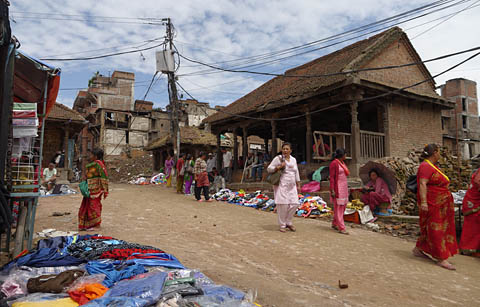
A month ago, vendors had already reestablished themselves in Bhaktapur.
Most of the debris has now been removed.

2015 Shail Shrestha
Bhaktapur Earthquake Status Update
The large earthquakes that struck Nepal on 25 April and 12 May of this year caused a significant amount of damage in Bhaktapur. What was not yet apparent at the time of the report in the last issue was the extent of damage that had yet to become evident. When the ground stopped moving here in Bhaktapur, there were hundreds of buildings that had collapsed wholly or partially, and eventually some 350 fatalities were recorded. In point of fact, comparatively few buildings collapsed entirely, but many more had collapsed partially.
In the months following the earthquakes, a great many buildings have had their top two stories removed. Most of these were additions that had been made after the initial construction. Many of these buildings did not appear from the street to have suffered serious damage, but in fact the upper floors of old buildings often suffered serious cracking. Nearly all of the affected buildings were of unreinforced masonry construction. I am aware of only one reinforced concrete building in Bhaktapur that suffered heavy damage.
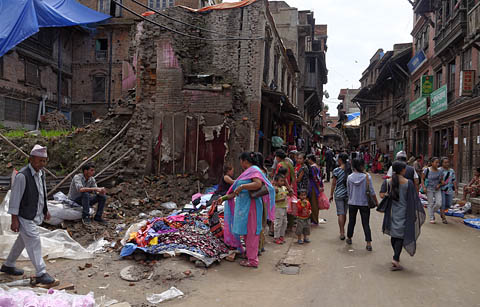
Most of the damaged buildings will eventually have to be demolished and rebuilt.

2015 Shail Shrestha
When the debris of collapsed or demolished buildings is examined, it becomes apparent that nearly all of them were built of bricks cemented with mud mortar. It is evident that this method has little resistance to earthquake shaking.
The shortened buildings can be recognized by temporary galvanized, corrugated roofs. These are not so attractive as the traditional terra cotta roofs, but they are much lighter in weight and do help to protect already-weakened buildings in the event of another earthquake. Eventually, most or all of these buildings will be entirely demolished and reconstructed, but for the time being they provide reasonably safe accommodation.
The burning question for Bhaktapur is whether or not the damaged houses will eventually be replaced by stronger buildings that retain the unique character of ancient Newari cities, of which Bhaktapur was the leading example. To a considerable degree, it is still possible to understand the nature of Bhaktapur as it was before the earthquakes, but it will be some years before the city may return to its former glory. At least the debris has been mostly carted away, and the streets are once again clean.
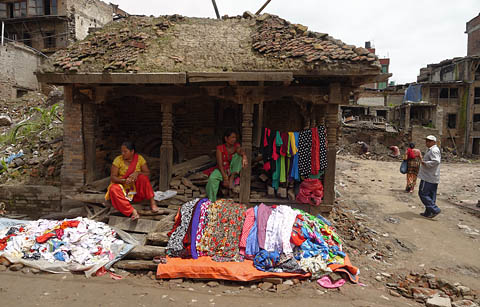
There are some areas of Bhaktapur that have been almost entirely razed.
Many buildings that did not fall were found so precarious that they were
demolished almost immediately.

2015 Shail Shrestha
Bhaktapur is still a fascinating place to visit, and there are areas that suffered relatively little damage and appear today much as they did before the earthquakes. With some imagination, it is possible to see how the other parts of the city had formerly appeared. Until recently, I would not have suggested a visit to Bhaktapur given the danger and obstruction of the debris, but this situation has now been almost entirely corrected. Durbar Square did lose a couple of structures, but most of it is still intact, even if some of it shows signs of damage.
The best way to support Nepal generally and Bhaktapur in particular would be to visit here and help to restore the vital tourism sector. The majority of Nepal's districts were unaffected by the earthquakes.

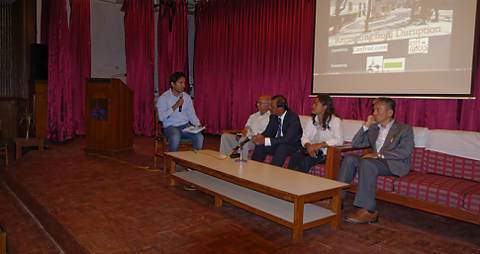
Recovering from Disruption panel discussion

2015 Bansidhar Sainju
Feature Article
Summary of the Panel Discussion Following the Premiere of Recovering from Disruption in Kathmandu
The film's premiere in Kathmandu was followed by a 90-minute discussion of the issues raised by the film. The discussion was moderated by Prashant Khanal, Program Coordinator of Clean Energy Nepal. Panelists were Dr. Mahendra Subba, Former Joint Secretary at Ministry of Urban Development, Prof. Dr. Sudharshan Raj Tiwari, Architect/Urban Planner, Mr. Raju Mani Manandhar, Project Director, Ministry of Urban Development, and Shriju Pradhan, Coordinator of Heritage Conservation and Community Mobilization at Kathmandu Metropolitan City (KMC).
The discussion began with a consideration of the move in Nepal towards Western-style car culture. There was a concern that Nepal is not ready, as some cities in the West are, to move away from the car. However, the need to rebuild extensively following the two major earthquakes earlier this year is an opportunity to turn away from auto-centric urban planning and towards more sustainable patterns based on walkable communities. A great difficulty is that cars are the "dream" possession of many Nepalis, few of whom can afford a car.
KTM Walks has been campaigning to make some areas carfree, and this proposal has been gaining support recently, especially after last year's very successful week-long carfree event in several neighborhoods of Kathmandu. People experienced the pleasures of streets without motor vehicles. It is essential to gain community support for these initiatives, and last year several communities actually decided to expand the proposed temporary carfree areas.
Like most cities, the core of Kathmandu was never made for cars but for people on foot. Some people thought it was impossible to make all of Kathmandu carfree, but that it is possible to return the core areas to their original carfree state. The familiar problem was mentioned: people want to get rid of every car and motorcycle except their own.
Durbar Square can still be considered carfree, even though there are a few moving vehicles. However, parking has not been allowed.
When we consider carfree societies, we should also consider motorcycles; otherwise, the discussion does not make sense in the Nepali context.
Cars have taken up a large part of the small amount of open space in Kathmandu, and their pollution is a serious problem. Today, urban planning in Nepal seems only to consider increasing road capacity. We must instead consider the energy efficiencies of rail systems.
It was thought that the ideals the film presents about carfree cities were interesting. Some thought that the film did not sufficiently address the sustainability needs of developing nations. It was felt that problems such as slums, poverty, and poor infrastructure
were not adequately addressed in the film or by the carfree design. It was felt that Nepal lacks the resources to build carfree areas.
The idea was put forward that it is not cars in themselves that are the problem but rather wide urban highways and their location. Further, "economic center" is the one term that defines a city, and a city has to be sustainable in that context to succeed. The issue with Nepal's cities is that they are not economically self-sustaining but must be subsidized by the government.
In Bhaktapur, there has actually been a reversal of the carfree initiative. Durbar Square had for years been free of motorized vehicles, but the city lost control over vehicles after the earthquake. Just getting back to the old situation will be difficult.
We must address land use patterns before turning to transport and road management. Land use and development patterns should be guided to encourage specific uses of land and to discourage other uses. Old policies intended to control subdivision are now making suburban estates preferable to agricultural use.
Regarding housing patterns, it is not just road policies that need to be considered but also public policies. Many policies that have been formally adopted are not actually implemented. Road extensions are influenced by the development of new estates and threaten heritage buildings and spaces.
The film shows that car-centric design was a mistake that the West made, so let's not repeat this mistake. The trolley bus in the Valley was destroyed by the privatization of the public transport. Capitalism is a challenge carfree cities will have to face.
We should ask if we really have workable public transport. The privately-owned transport vehicles we have are too small, run only when there are many passengers, and only depart when they are already filled beyond capacity.
Internal migration has caused unmanageable conditions in Kathmandu. It is the imbalance in the investment inside and outside the Kathmandu Valley that has caused migration to the city from rural areas.
Westerners are coming back to the Eastern way of life as they realize the hazards of the way of life they chose. On the other hand, the East is headed towards adopting Western philosophies.
We should consider the difference between Eastern philosophy and Western philosophy and the technology that the West builds. Eastern people have always built "cool technologies," while the West has always produced "hot technologies." The traditional building materials can best be regarded as cool technology, where the walls were designed to use the climate conditions to the dweller's benefit. Every technology built by the East has natural processes built in and barely produce heat, whereas technologies from the West are energy intense. This has to be considered as a major cause of the global warming we are facing today.
We must consider the consequences of house pooling [reassembly of land parcels and redevelopment of residential structures] in traditional areas, as the land has been well built and managed but could be threatened by land pooling practices.
As far as land use control is considered, Nepal is seen as a good example. What we lack is human resources capacity. We do not have planners at the municipal level. We need to consider building new city centers that channel our investments to regional cities outside Kathmandu. It is immigration that is bringing people to Kathmandu, and with them come the other opportunities they can't seek in their own towns and villages.
We need to consider our urban futures. Our ancient cities have highly developed local neighborhoods, where strangers become friends on the street. There are many structures carefully placed to harmonize with the community. We don't need good-looking streets but usable streets.
Is ancient city design replicable in new-built towns? Mixed uses is the way ahead. Delineated patterns can be seen in ancient rural settings, but urban patterns always had mixed use of land and buildings. It might be necessary to remodel our cities, and thus house pooling would be the right way to go ahead in some conditions.
Kathmandu is a cyclable city, but we have never considered that and are investing in wide roads as if there were no choice than to build spaces for cars. Carfree cities have several dimensions that must be addressed to make them possible. It requires multiple-sector coordination from transport to infrastructure management. The government doesn't have such a capacity at the moment. Car-minimized cities are possible where multiple transport choices are offered.
We can't envision a carfree city for now, but we can make carfree zones. There is the possibility of producing carfree sections in the new-town projects. We should work for designed carfree spaces.
The opinion of young people tells how the city of the future will be. We can certainly try to make the festival streets carfree. People are always better then anything else. We can make a city for a biological man that addresses biological needs. Cars and flyovers are technological blackmail.
Addressing climate change might not be an obligation that is important to us, but if we see the economic state of the nation, we will realize that two-thirds of our annual deficit arises from petroleum imports. Kathmandu is unable to pay for its own development and depends on government funds. The road development that we see today depends on international funds.
There is a prediction of high competition with India for oil and energy. Can we compete with them for that? Can we imagine being compelled to sell most of our hydropower to India to pay for petroleum, instead of using it for our own electric rail systems?
About 14 model cities are being planned at the highway intersections between north-south highways and the mid-hill highway. Can we imagine cities like Bhaktapur built in other parts of Nepal? If we evaluate our economic capabilities, we can't afford to build another Kathmandu, given that we can't even afford this one. But we as communities from all across Nepal can afford to sustain 100 more Bhaktapurs almost anywhere.
J.H. Crawford's Thoughts regarding the Discussion
In point of fact, the cheapest urban option is carfree development and redevelopment. Car infrastructure is the most expensive transport infrastructure. Most of the infrastructure investment in the Kathmandu Valley today is going to roadbuilding, which diverts funds from sorely needed investments in health, electricity, water, and sanitation. Combined with the filthy air that cloaks the Valley much of the year, the decision to invest in highways has a direct and serious adverse effect on public health.
In addition to being the cheapest option, carfree cities also provide the highest quality of life. After decades of suffering from cars, most cities in the West have decided not to build more roads and are investing instead in better bicycle and walking infrastructure, which costs a small fraction of expanded automobile infrastructure.
Bhaktapur is a nearly ideal model for a sustainable city. Like medieval cities generally, it is characterized by relatively narrow streets, medium-rise buildings, and mixed uses. Bhaktapur does include the essential squares that serve as social, economic, and religious spaces. The per-capita energy requirements are very low, and the strength of social bonds is great.

News Bits
The links below will open in a new browser window or tab, depending on your browser; (Ctrl+click may behave differently):
Urban Planning and Design
"What Does the Data Say About Cities for People?"
"Compact, walkable, and transit-oriented development creates sustainable, healthy, and economically vibrant cities that deliver a high quality of life to residents." (SustainableCitiesCollective.com)
"Building streets for humans rather than cars could help solve the affordable housing crisis"
"In the revised version of the street, you can still drive a car, but you'll have to do it slowly in a space that's shared respectfully with pedestrians rather than optimized for high-speed cruising. And there's no space dedicated to parking. That's not to say that nobody can park a vehicle. But to do so you're going to have to pay for parking in the private market, the same as someone looking for a place to sleep is going to have to pay for space. The government isn't going to create special zones set aside for vehicle storage." Car-lite is not as good as carfree, but it is an improvement on auto-centric. You'll still need wide streets to carry arterial traffic. (Vox.com)
"This Is What A World Without Cars Would Be Like - and It's Beautiful"
"This is not just about a battle for a bike lane. This is about our addiction to oil. This is about our wars in the Middle East. This is about global warming. This is about generations of kids not being able to move around and get the exercise they need to be healthy. This is a battle for the new American Dream." (SustainableCitiesCollective.com)
"Great Quake highlights value of Newari concept of 'Chowk' "
The Nepal government, in its new Building Code, must adopt policies to incorporate the traditional "chowk" [courtyard or small square] between every few houses in new settlements.(TravelNewsNepal.com)
"Turn This Parking Lot Into a Village"
"Greenbelt Station's parking lot has 3,399 all-day spaces and uses an area of 37 acres. Is that large enough for a village of small streets? Let's use the village of Jakriborg, Sweden as an example. . . ." (SmallStreets.org)
"Here's What Happened When A Neighborhood Decided To Ban Cars For A Month"
"Two years ago, an average neighborhood in the South Korean city of Suwon embarked on a radical experiment: For one month, the neighborhood suddenly got rid of every car. The neighborhood transformed. Cafes and restaurants added new sidewalk seating, and the streets filled with people. The length of the experiment helped show how people could actually live without cars in everyday life." (FastCompany.com)
"Learning to live without cars"
"Cities are becoming far better places because they are less car-dependent. The six most walkable cities in the US are 38 per cent wealthier, they have a higher GDP than the rest." (Abc.Net.Au)
"Mastercard CEO: In The Ideal City, The Rich Ride The Bus"
"A city's transit system reflects a city's planning, and in a well-planned city, residents and visitors can easily engage with the city's features and services, and the city's wealth can readily flow." (Forbes.com)
"How Groningen invented a cycling template for cities all over the world"
"The inhabitants of this lively northern university city regard their homestead as the cycling capital of the Netherlands. They might very well be right: 61% of all trips in Groningen are made by bicycle, rising to more than 70% for trips made to educational institutions." (TheGuardian.com)
"How Copenhagen Became A Cycling Paradise By Considering The Full Cost Of Cars"
"Cars pollute and cause more accidents. So when deciding whether to invest in roads or bike lanes, Copenhagen calculates all of the social costs involved and bikes win out." (FastCoExist.com)
"Brussels boasts 'second biggest pedestrian area in Europe' after Venice"
June 29th saw the "official installation of the pedestrian area in central Brussels. The car-free zone will be extended from 28 to 50 hectares (124 acres). Brussels will boast Europe's second biggest pedestrian area in a large city, after Venice." (DeRedactie.be)
"How 5 international cities are going car-free"
Five major European cities, Madrid, Dublin, Hamburg, Copenhagen, and Helsinki, are taking major steps in the direction of going carfree. This is becoming a trend. (Mn.com)
"Bringing a Rational Perspective to the Table"
"Santa Rosa is the seat of government for Sonoma County. I'm going to highlight two different parts of town and two very different forms of urbanism to demonstrate the basic message behind both Strong Towns and Urban3." (GranolaShotGun.com)
"Downtown Dublin Is Getting Rid Of Cars"
"Right now, pedestrians don't have it easy. Dublin has a compact city center, but we don't give enough priority to pedestrians or cyclists. All too often those who walk are left waiting at crossings while cars whizz past for minutes on end." (FastCoExist.com)
"Downtown Cleveland Is Turning a Traffic Hub Into a Public Park"
"City planners are increasingly realizing that investment in public spaces, many neglected for decades, can provide a competitive edge in luring new businesses and residents - especially young creative types - to the urban core. The High Line now attracts millions of visitors a year, and property values nearby have skyrocketed." (CityLab.com)
"How $500 Million Turned Car-Centric Indianapolis Into a More Walkable City"
"Despite the apparent need for sidewalks, Indianapolis went more than 20 years without constructing one. With a consolidated city-county government, the footprint of municipal services encompasses 3,000 miles of thoroughfares and residential streets over 400 square miles. But it's not just cars and bikes navigating those streets; there are also pedestrians on the asphalt, hugging the side of the road and trying to patch their way through a city that wasn't designed with them in mind." This is a huge project in the American heartland, not generally noted for innovation. (NextCity.org)
Car Trouble
"We are sacrificing the right to walk"
The fundamental right to walk where you are going is under threat in the USA. It's a long piece, but this chilling account should be read by all Americans. (Aeon.com)
"Fossil fuels subsidized by $10m a minute, says IMF"
"The IMF calls the revelation 'shocking' and says the figure is an 'extremely robust' estimate of the true cost of fossil fuels. The $5.3 trillion subsidy estimated for 2015 is greater than the total health spending of all the world's governments." (TheGuardian.com)
"Child health fears at the most polluted spot in the world's most polluted city"
"If you look at lung function in children, there is significant decline with constant exposure. This will probably be irreversible. For adults, there is also a more rapid decline than usual with age. Some suggest it is the equivalent of smoking around 10 cigarettes per day. There is also a higher chance of developing coronary and arterial disease." (TheGuardian.com)
"How our cars, our neighborhoods, and our schools are pulling us apart"
"Within large metropolitan areas, we live more spread out, more distant, from each other than we once did. The population density in central cities plummeted by half after the 1950s, as many residents left for the suburbs." People also occupied steadily larger dwellings. (WashingtonPost.com)
Climate Change
"World headed for irreversible climate change in five years, IEA warns"
"The world is likely to build so many fossil-fuelled power stations, energy-guzzling factories and inefficient buildings in the next five years that it will become impossible to hold global warming to safe levels, and the last chance of combating dangerous climate change will be 'lost for ever,' according to the most thorough analysis yet of world energy infrastructure." (TheGuardian.com)
"Why Jim Hansen Worries"
"The top US climate scientist James Hansen thinks the goal is a nonsense and the world is on the wrong track thinking that two degrees of warming is safe." (Blogspot.com)
"With Afterburn, Richard Heinberg paints a bleak picture of an inevitable post-carbon future"
Heinberg says, "It is absolutely imperative that the world does move away from fossil fuels, but it is not going to happen without severe economic sacrifice, political upheaval, and a 'simplification and decentralization of societal systems'." (Straight.com)
"UN climate chief says Paris talks last chance"
"UN climate chief Christiana Figueres says that the upcoming climate change conference in Paris is the last chance for a meaningful agreement." (TheHimalayanTimes.com)
"Nothing Less Than a Systemic Transformation of Our World"
"Paris will be the moment that demonstrates that delivering concrete actions for the global transformation will come from people and not our politicians." (CommonDreams.org)
"This Year Is Headed for the Hottest on Record, by a Long Shot"
"Last month was the hottest May on record, and the past five months were the warmest start to a year on record, according to new data released by NOAA. It's a continuation of trends that made 2014 the most blistering year for the surface of the planet, in records going back to 1880." (BloomBerg.com)
"World's Richest Countries Decide to Take It Slow on Climate Change"
"The G7 were responsible for 59 percent of historical global carbon dioxide emissions as of 2011, according to the World Resources Institute. That percentage is falling as developing countries, mainly China, rapidly expand their economies. Still, this outsized share means the world's richest countries have a responsibility to help the world transition to a zero-carbon economy as quickly as possible." (Slate.com)
"What's Really Warming the World?"
"Greenhouse gases warm the atmosphere. Aerosols cool it a little bit. Ozone and land use changes add and subtract a little. Together they match the observed temperature, particularly since 1950." Animated charts that will convince skeptics. (BloomBerg.com)
"Stop burning fossil fuels now: there is no CO2 'technofix', scientists warn"
"The research, published in Nature Climate Change today delivers yet another demonstration that there is so far no feasible 'technofix' that would allow humans to go on mining and drilling for coal, oil and gas (known as the 'business as usual' scenario), and then geoengineer a solution when climate change becomes calamitous." This is a warning to heed. (TheGuardian.com)
"How carbon credit scheme resulted in even more greenhouse gas emissions"
"A UN-backed carbon offsetting program enriched Russian and Ukrainian companies but made climate change worse, according to a new study." (CSMonitor.com)
"Here's what it would take for the US to run on 100% renewable energy"
"The road maps show how 80 to 85 percent of existing energy could be replaced by wind, water, and solar by 2030, with 100 percent by 2050. The result is a substantial savings relative to the status quo baseline, in terms of energy costs, health costs, and climate costs alike. The resulting land footprint of energy is manageable, grid reliability is maintained, and more jobs will be created in renewables than destroyed in fossil fuels." (Vox.com)
"Bombshell Study Reveals Methane Emissions Hugely Underestimated"
"The study throws into question countless other estimates of methane emissions from natural gas production through hydraulic fracturing, or fracking, which has been hailed as a low-emission energy solution." Fracking is not a solution to anything. (CommonDreams.org)
"Earth's Ice Is Melting Much Faster Than Forecast. Here's Why That's Worrying"
"Climate warming had just infiltrated Greenland glaciology in earnest. Summer melt water, it turned out, drains down quickly to the bed, lubricating the glacier's flow. Suddenly we realized an expanding melt season meant the ice sheet would be sliding faster, longer. It was not to be the only time our philosophy got hit with a major surprise that connected the ice sheet with climate change and the threat of abrupt sea level rise." (HuffingtonPost)
"Rapid Arctic ice loss linked to extreme weather changes in Europe and US"
"Western Europe and large parts of North America will experience more extreme weather because of 'Arctic amplification' - the enhanced sensitivity of high latitudes to global warming." (TheGuardian.com)
"Retreating sea ice linked to changes in ocean circulation, could affect European climate"
"Retreating sea ice in the Iceland and Greenland Seas may be changing the circulation of warm and cold water in the Atlantic Ocean, and could ultimately impact the climate in Europe, says a new study." (ScienceDaily.com)
"Sudden onset of ice loss in Antarctica so large it affects Earth's gravity field"
"Scientists have observed a sudden increase of ice loss in a previously stable region of Antarctica. The ice loss in the region is so large that it causes small changes in the gravity field of the Earth." (ScienceDaily.com)
"Global sea levels have risen six meters or more with just slight global warming"
"A new review analyzing three decades of research on the historic effects of melting polar ice sheets found that global sea levels have risen at least six meters, or about 20 feet, above present levels on multiple occasions over the past three million years. What is most concerning is that amount of melting was caused by an increase of only 1-2 degrees Celsius in global mean temperatures." (ScienceDaily.com)
Transport, Pollution, etc.
"When the next crisis comes, which movements will seize the opportunity?"
"All this missed opportunity should be seen in the context of Barack Obama's presidency, since it was he who said, during his candidacy, that the Swedish solution to its own banking crisis had been correct: Seize the banks rather than bail them out. (In a recent New Yorker article on Greece, former finance minister Yanis Varoufakis said President Obama told him that the U.S. bailout was against his personal politics.)" (Resilience.org)
"Mole gets green light to test feasibility of underground freight trains in the UK"
"The UK firm has developed a system it claims could reduce the use of 'road freight within urban areas by using freight pipelines carrying goods in capsules to link edge of town consolidation centres with strategically placed inner town nodal points'." The idea is similar to "Metro-Freight" as proposed in Carfree Cities 15 years ago. However, metro-freight is more flexible and is based on the ISO standard shipping containers in wide use around the world. (TheLoadstar.co.uk)
"Health risks of shipping pollution have been 'underestimated' "
"The setting up of a low-emission shipping zone follows US academic research which showed that pollution from the world's 90,000 cargo ships leads to 60,000 deaths a year in the US alone and costs up to $330 billion per year in health costs from lung and heart diseases. The US Environmental Protection Agency estimates the buffer zone, which could be in place by next year, will save more than 8,000 lives a year with new air quality standards cutting sulphur in fuel by 98%, particulate matter by 85% and nitrogen oxide emissions by 80%." Ships burn the filthiest fossil fuel around, #6 bunker oil. (TheGuardian.com)

About Carfree Times
Next Issue
The next issue of Carfree Times is scheduled for November/December 2015.
Subscribe to Carfree Times
Carfree Times is published quarterly at Carfree.com.
To receive e-mail notices of new issues, please visit the subscription page or
send e-mail with the word "Subscribe" in the subject line. We do not share our mailing list.
Write for Carfree Times
Interested in writing for Carfree Times? We welcome articles on a wide variety of subjects and offer an opportunity to publish letters to the editor and guest editorials. Drop us an e-mail.

Back to Carfree.com
Carfree Times Home
Back to Carfree Times Issue 78
Forward to Carfree Times Issue 80
E-mail
carfree.com
Text and illustrations, except for guest content, placed in the public domain

|

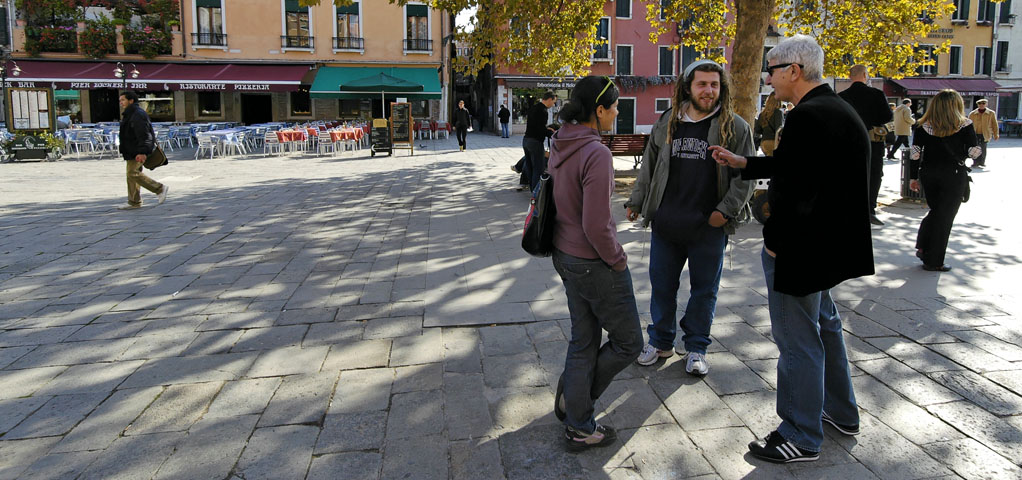















































![]()



